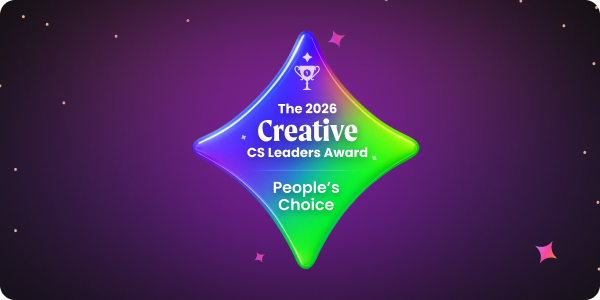As a customer success leader, you are always looking for ways to improve the productivity and efficiency of your team. One solution that has been gaining popularity in recent years is the use of Artificial Intelligence (AI) technology. In particular, ChatGPT, a powerful AI language model, can help customer success teams automate many of their tasks, saving them time and effort while improving the quality of customer interactions.
What is ChatGPT and how does it work?
ChatGPT is an AI language model that uses deep learning to understand and generate human-like language. It is trained on a massive dataset of diverse text, making it capable of completing a wide range of language tasks, including writing emails, chat responses, articles, and even poetry.
The technology behind ChatGPT is known as Generative Pre-trained Transformer (GPT), which uses machine learning algorithms to predict and generate sequences of text. To use ChatGPT, you simply input the relevant customer data or inquiry information, and the language model generates a personalized response that is tailored to the customer's needs. This can help your team respond more quickly and efficiently to customer inquiries while maintaining a high level of quality.
How can AI help customer success teams?
As a customer success leader, you understand that managing customer relationships effectively can be a challenging task, especially when dealing with a large volume of inquiries and requests. This is where AI comes in, particularly ChatGPT.
AI-powered tools like ChatGPT can assist your team by automating many of their tasks, such as drafting success plans, responding to customer inquiries, and preparing business reviews. This can help your team save time, improve productivity, and provide more accurate and consistent responses to customers.
{{cs-led}}
Using ChatGPT to write success plan skeletons and templates
Success plans are an essential component of any customer success strategy, as they outline the goals and objectives for a customer's journey. However, creating customized plans for each customer can be a time-consuming task. ChatGPT can help simplify this process by generating success plan skeletons and templates based on customer data.
By inputting customer data into ChatGPT, the language model generates a success plan skeleton or template that can be customized to fit each customer's unique needs. This can save your team significant time and effort, allowing them to focus on more critical tasks.
How does it work?
- Step 1: Gather Customer Data- The first step in using ChatGPT to write success plan skeletons and templates is to gather relevant customer data. This could include information such as the customer's goals, pain points, and desired outcomes. By understanding the customer's needs and expectations, you can create a personalized success plan that will help them achieve their objectives.
- Step 2: Input Customer Data into ChatGPT- Once you have gathered the necessary customer data, the next step is to input it into ChatGPT. The language model will then generate a success plan skeleton or template based on the customer's specific needs and goals. It's important to note that ChatGPT will require a prompt or starting point to generate a response. For example, you could input a question such as "What are the key milestones we should include in this customer's success plan?" or "What are the most important actions we should take to help this customer achieve their goals?"
- Step 3: Review and Customize the Output- After ChatGPT has generated the success plan skeleton, the next step is to review and customize the output. While ChatGPT can generate a personalized response based on customer data, it may not always be perfect. As a customer success manager, you have unique insights into your customer's needs and preferences, and you may need to make adjustments to ensure that the success plan meets their specific requirements. For example, you may need to add or remove milestones or adjust the timeline for certain actions to align with the customer's preferences or constraints. By reviewing and customizing the output, you can ensure that the success plan is tailored to the customer's unique needs and will help them achieve their goals.
- Step 4: Time to implement the plan :)
.png)
Using ChatGPT to prepare and respond to customer emails.
Your team likely receives a large volume of emails from customers, which can be overwhelming to manage. ChatGPT can help by generating automated email responses that are personalized and relevant to the customer's inquiry.
By inputting customer data and inquiry information into ChatGPT, the language model generates an email response that is tailored to the customer's needs. This can help your team respond to inquiries more quickly and efficiently while maintaining a high level of customer service
How does it work?
- Step 1: Gather Customer Data and Inquiry Information - The first step in using ChatGPT to prepare and respond to customer emails for personal recommendations or support questions is to gather the relevant customer data and inquiry information. For example, if a customer is experiencing issues with using your product or wants to know how to better use a specific feature, gather information on the customer's account, the product or feature in question, and their specific inquiry.
- Step 2: Input Customer Data and Inquiry Information into ChatGPT - Once you have gathered the necessary information, the next step is to input it into ChatGPT. The language model will then generate an automated email response that is personalized and relevant to the customer's inquiry. For example, if a customer is experiencing issues with using your product, input their account information, the specific issue they are having, and any relevant troubleshooting steps you have already taken into ChatGPT. The language model will then generate an automated email response that provides further recommendations and potential solutions for the customer's issue.
- Step 3: Review and Customize the Output - After ChatGPT has generated the automated email response, the next step is to review and customize the output. While ChatGPT can generate a personalized response based on customer data and inquiry information, it may not always be perfect. As a customer success manager, you have unique insights into your customer's needs and preferences, and you may need to make adjustments to ensure that the response meets their specific requirements. For example, you may need to add additional details or clarify certain points to ensure that the customer fully understands your response. In the case of providing personal recommendations, you may need to tailor the response based on the customer's specific use case or needs. For example, if a customer wants to know how to better use a specific feature, you may need to provide step-by-step instructions or examples that are specific to their use case.
- Step 4: Send the Email Response :)
%25201.png)
Using ChatGPT to share quick updates with customers (product releases, webinar invites)
Keeping customers up-to-date with the latest product releases, webinars, and other events is crucial for maintaining a strong customer relationship. ChatGPT can help by generating automated updates that can be sent to customers via email or other communication channels.
By inputting the relevant information into ChatGPT, the language model generates a personalized update that is tailored to each customer's needs. This can help your team keep customers informed while minimizing the time and effort required to do so.
How does it work?
- Step 1: Gather Relevant Information - The first step in using ChatGPT to share quick updates with customers is to gather the relevant information about the update. For example, if you are sharing information about a new webinar, you'll need to gather the date, time, topic, and speaker information.
- Step 2: Input Information into ChatGPT - Once you have gathered the necessary information, the next step is to input it into ChatGPT. The language model will then generate an automated message that is personalized and relevant to the customer. For example, you could input a prompt such as "What is the best way to share information about the upcoming webinar with our customers?" or "How can we effectively communicate the details of the upcoming webinar to our customers?"
- Step 3: Review and Customize the Output - After ChatGPT has generated the automated message, the next step is to review and customize the output. While ChatGPT can generate a personalized response based on the information you input, it may not always be perfect.
- Step 4: Send the Update :)
%25201.png)
Using ChatGPT to prepare customer business reviews
Customer business reviews are a critical component of any customer success strategy, as they help to evaluate the customer's progress and identify areas for improvement. However, preparing these reviews can be a time-consuming task for your team. ChatGPT can help by automating the process of preparing these reviews, saving your team significant time and effort.
By inputting customer data and performance metrics into ChatGPT, the language model generates a personalized business review that highlights the customer's achievements and areas for improvement. This can help your team provide more accurate and relevant feedback to customers while streamlining the review process.
Overall, ChatGPT can be a powerful tool for customer success teams, helping them to improve productivity, efficiency, and the quality of customer interactions. By automating many of the routine tasks associated with customer success, your team can focus on building stronger relationships with customers and achieving better outcomes.
{{cs-led}}
How does it work?
- Step 1: Gather Relevant Data - The first step in using ChatGPT to prepare customer business reviews is to gather the relevant data about the customer's account and business performance. This could include data such as revenue growth, customer acquisition rates, and customer retention rates. Using ChatGPT to prepare customer business reviews can help your team communicate important business performance information more quickly and efficiently while maintaining a high level of customer engagement. By streamlining the review process, your team can focus on building stronger relationships with customers and achieving better outcomes.
- Step 2: Input Data into ChatGPT - Once you have gathered the necessary data, the next step is to input it into ChatGPT. The language model will then generate an automated business review report that is personalized and relevant to the customer. For example, you could input a prompt such as "What is the best way to prepare a business review report for our customer?" or "How can we effectively communicate our customer's business performance to them?"
- Step 3: Review and Customize the Output - After ChatGPT has generated the automated business review report, the next step is to review and customize the output. While ChatGPT can generate a personalized report based on the data you input, it may not always be perfect. As a customer success manager, you have unique insights into your customer's needs and preferences, and you may need to make adjustments to ensure that the report meets their specific requirements. For example, you may need to tailor the report to highlight specific performance metrics or add additional details that are relevant to their business needs.
- Step 4: Share the Business Review Report :)


.avif)

.png)

.png)




%20(1).png)
















.png)
.png)
.png)



.avif)





.png)
.png)







